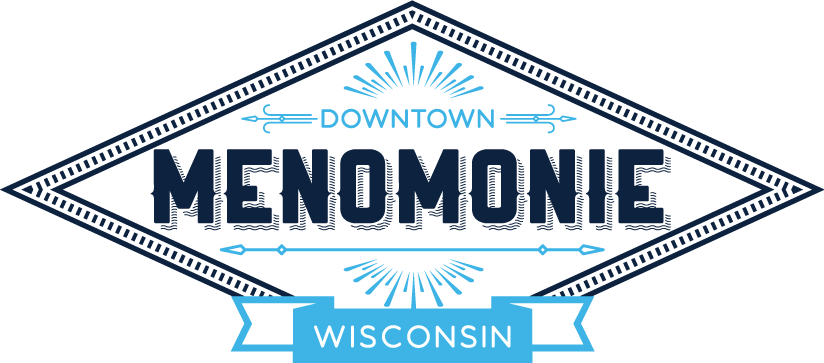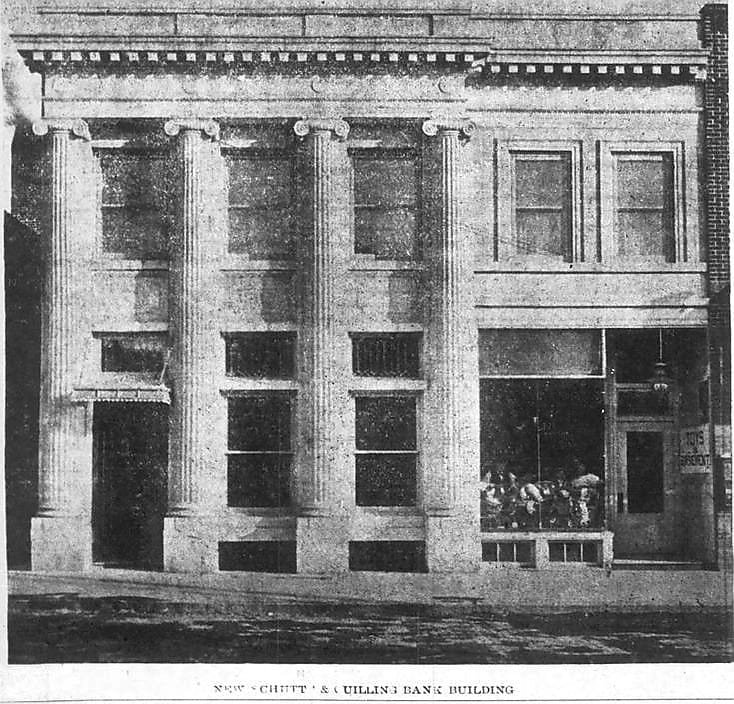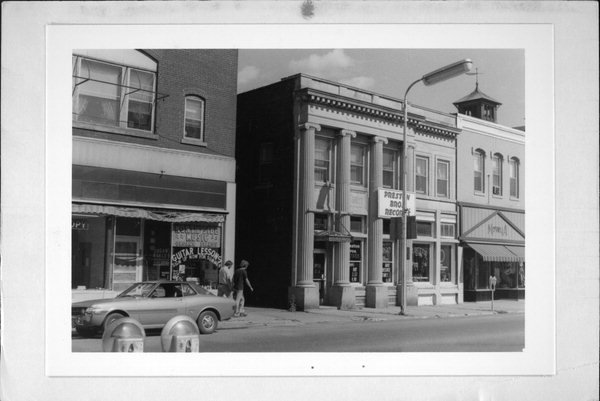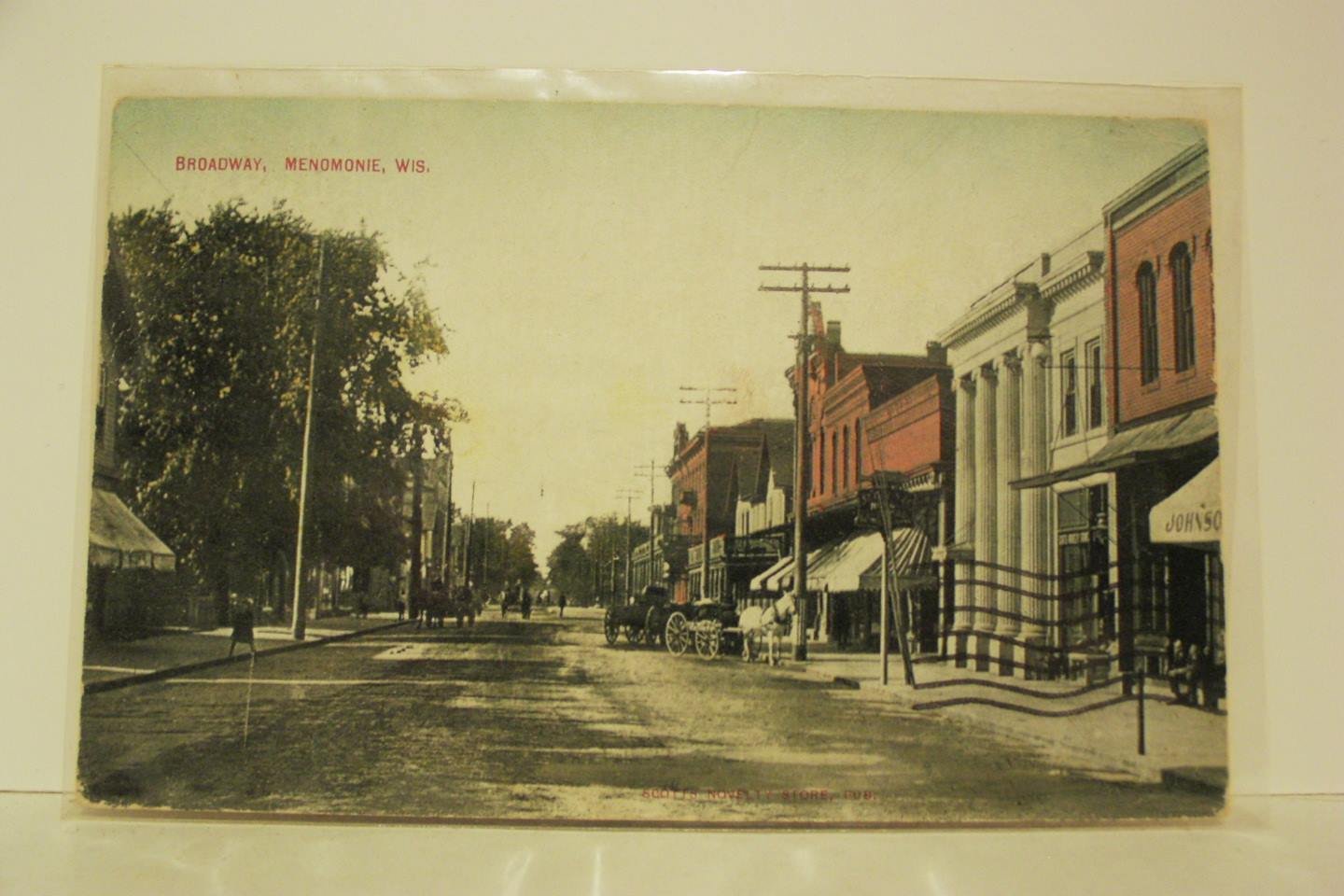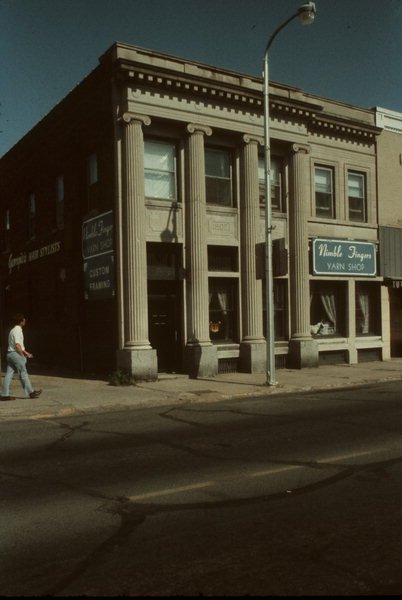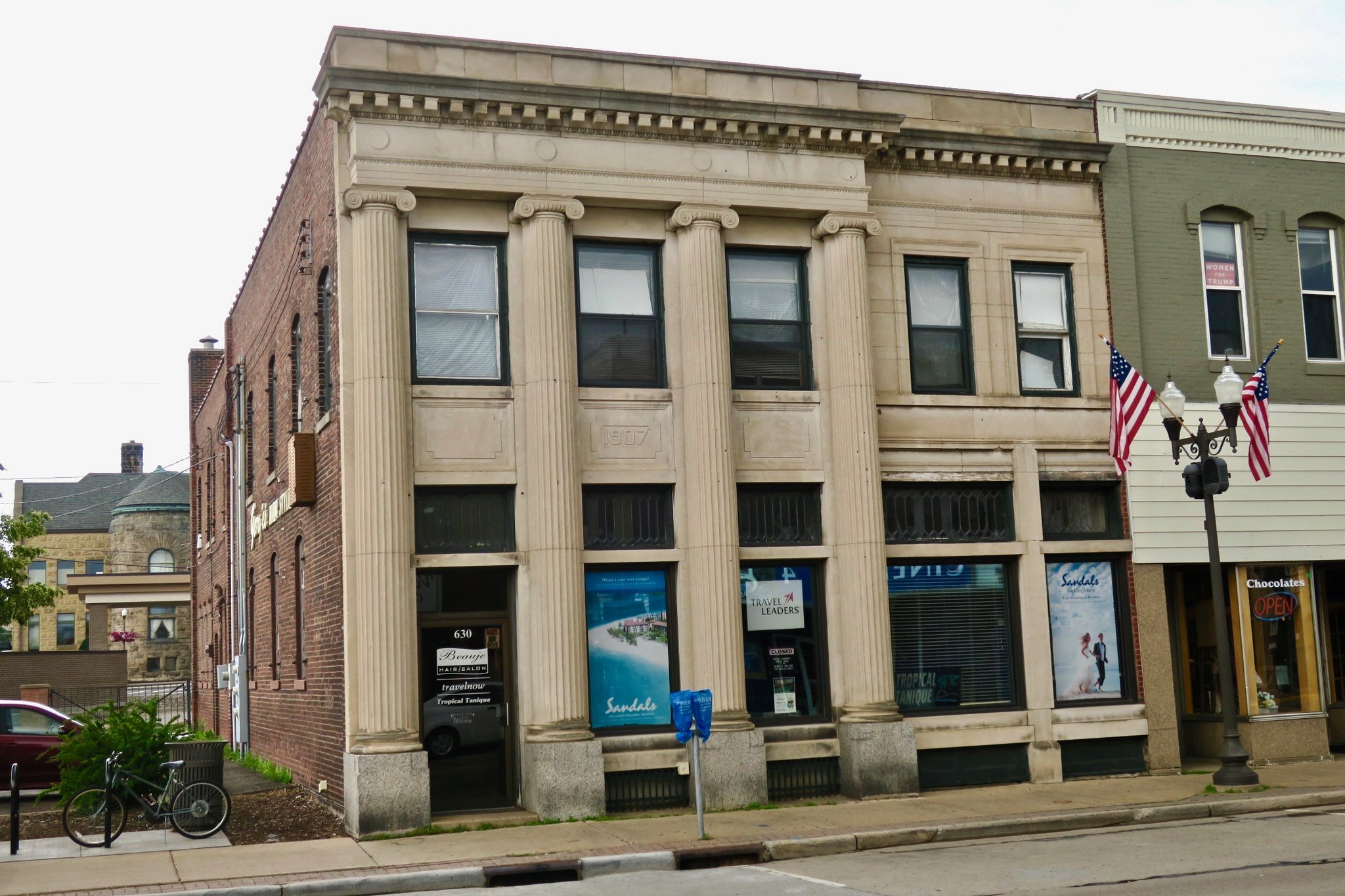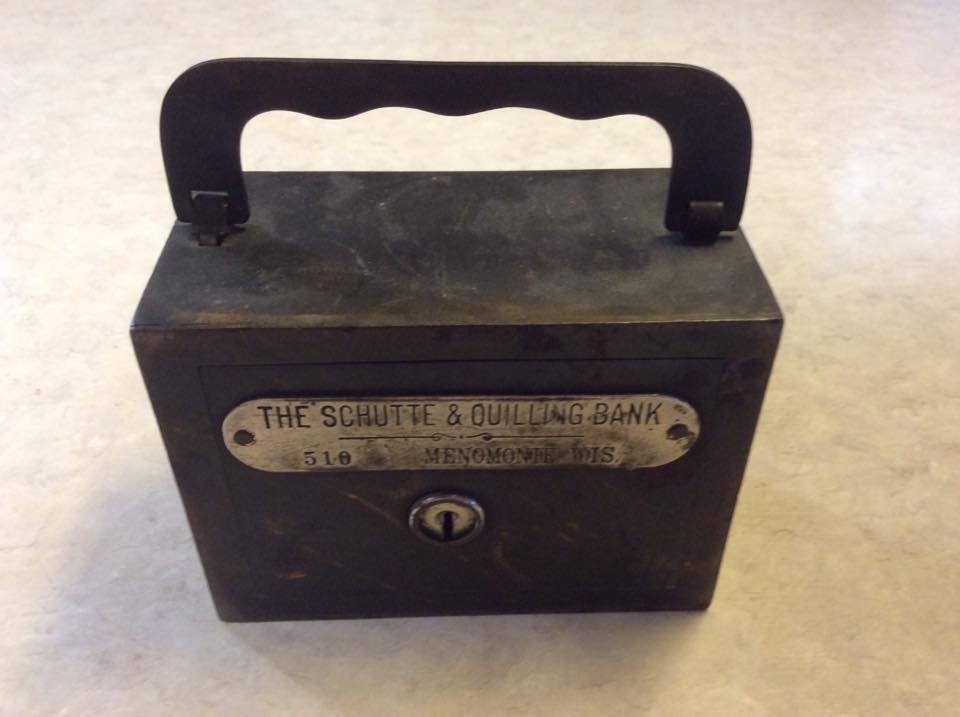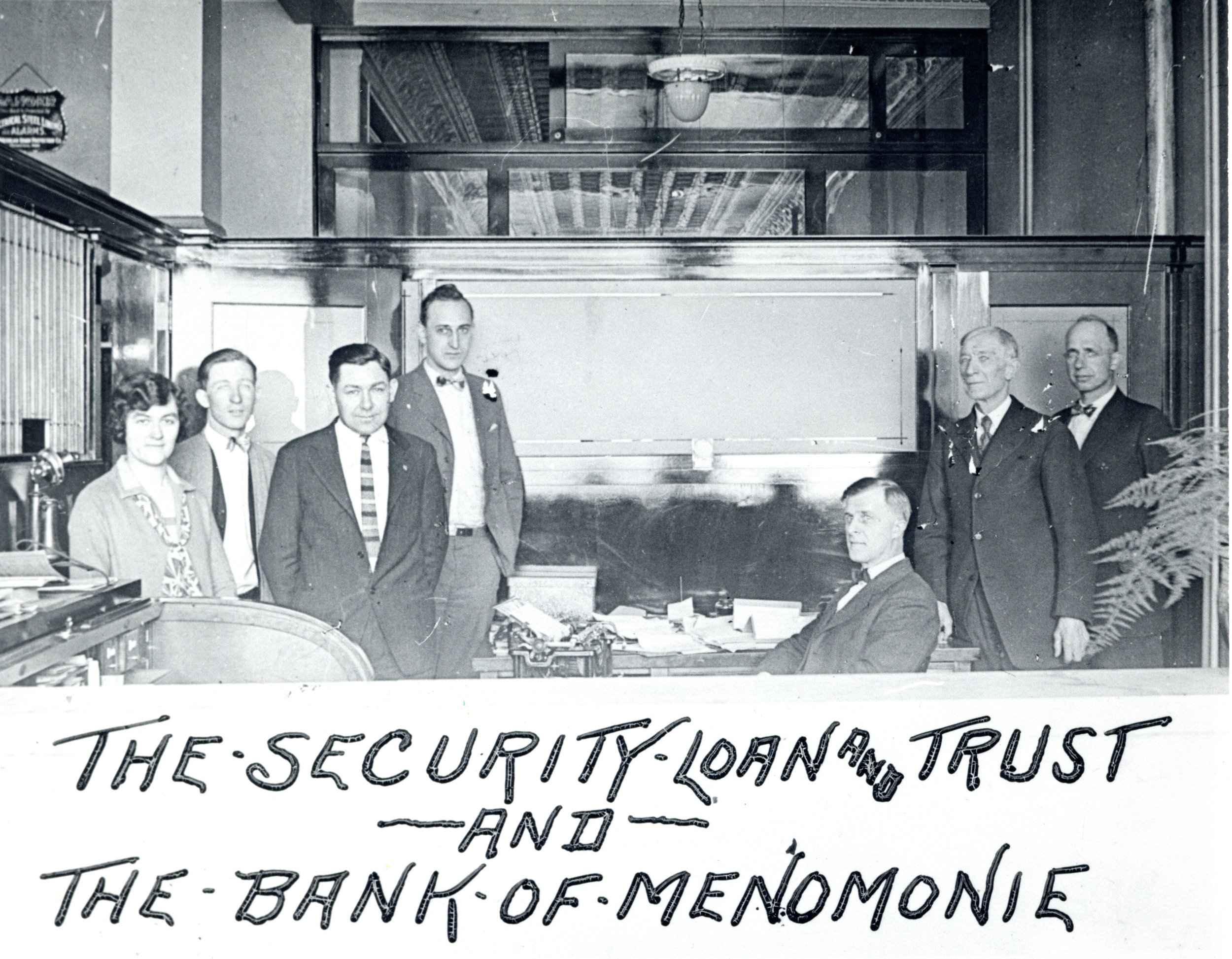Schutte & Quilling Bank | 630 Broadway Street
History of the Building
The Schutte & Quilling Bank was originally founded in 1873 by William Schutte and Albert Quilling who utilized a vault in the back of their general store for banking purposes. In 1903, the bank was officially incorporated and in 1907 they constructed what we now know as the Schutte & Quilling Bank building at 630 Broadway Street.
When Schutte and Quilling celebrated their 50th anniversary in business, they had assets worth over $200,000, or over $4.5 Million in today’s money. That same year, they merged with First National Bank, creating the largest bank state-wide, at the time, for a city of Menomonie’s size.
This building is composed of brick with a stone, Neo-Classical Revival front that features Ionic Columns. These columns take their shape and design from Ancient Greece and are generally located on the front of buildings near the entrance. Some columns in this style are essential to the structure of the building holding up the roof or beams, while others are simply decorative.
Neo-Classical Revival architecture was popular between 1893-1940 and is thought to be inspired by Americans’ early interest in Classical Revival and Greek Revival styles. This style is thought to have gained popularity from the World’s Columbian Exposition in Chigaco in 1893. The exposition featured the Chief Architect, Daniel Burnham’s, ideas of what a “beautiful city” movement could look like. The structures built for the fair were not permanent but quickly became a template for banks and public buildings nationwide. Millions of visitors attended the fair and returned home with inspiration for the future of commerce, industry, technology, and architectural design. Many of the historic buildings in Chicago still feature this Neo-Classical Revival style of architecture because of the fair in 1893.
Our version of Neo-Classical Revival architecture still stands on Broadway and has been the home of many businesses throughout its history including TC Vintage, Nancy Feminine Apparel, a grocery store, a flower shop, and a travel agency.
Local Stories & Lore
While it was the Schutte & Quilling Bank, they gave out “universal size” wrenches as a promotional item.
This is a history series in partnership with the Dunn County Historical Society where we will be featuring historic downtown buildings each month, sharing their history and unique features. Our intention is that these blogs will be added onto throughout time as stories are shared and more history is discovered.
Do you have family stories about the Schutte & Quilling Bank building? Is there a fun memory of a unique business that existed in the space in the past? Do you have a spooky story about the building? We would love to hear about them! Email director@downtownmenomonie.org with your stories, lore, or memories.
Glossary:
Ionic Columns: Columns are the upright pillars, or posts, attached to a building. They are generally located on the front of buildings near the entrance. Some columns hold up a room, beam, or may just be a decorate aspect to the building. Ionic columns take their shape and design from Ancient Greece.
